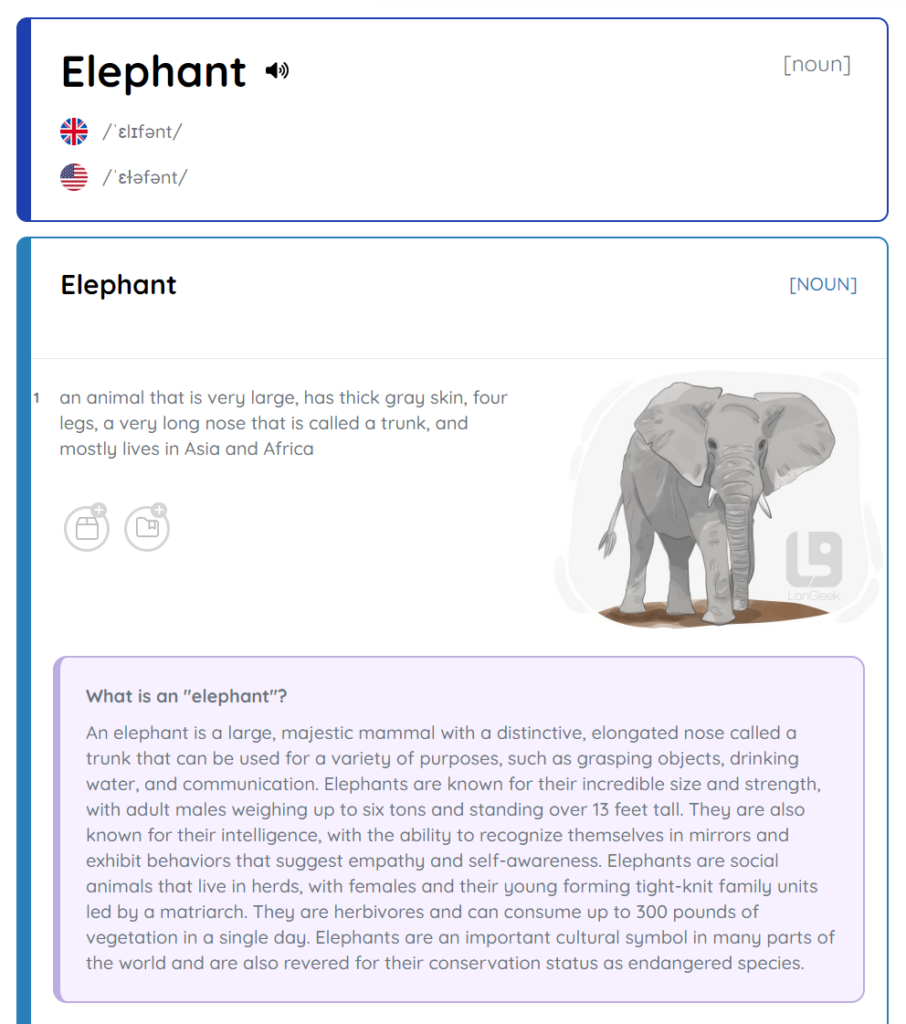LanGeek provides word descriptions to enhance the learning experience by offering more than just simple definitions. These descriptions are expanded explanations designed to help learners understand words in depth, particularly those that are complex, abstract, or culturally specific. They go beyond the basics to provide learners with a clearer, more complete understanding of a word’s meaning and usage in context.

Purpose of Word Descriptions
Word descriptions in LanGeek serve as a key component of contextual learning. While definitions give a basic understanding of a word, descriptions provide additional context, making it easier for learners to apply the word in real-life situations. Descriptions are especially important for words that:
-
Describe abstract concepts or emotions that cannot be fully captured in a single sentence.
-
Represent cultural terms that require further explanation or context.
-
Refer to complex systems or activities that need more detail than a simple definition can provide.
How LanGeek Creates Word Descriptions
LanGeek’s approach to word descriptions involves expanding on basic definitions by offering detailed explanations that cover various aspects of the word. The process includes:
-
Describing complex systems like board games or sports, where the rules and structure need to be explained.
-
Detailing physical characteristics and habitats of animals, especially exotic species, for a complete understanding of the word.
-
Providing context for abstract terms (e.g., “serendipity”, “nostalgia”) that require more in-depth explanation.
Tone of LanGeek Word Descriptions
The tone of word descriptions is designed to be clear and simple, with the goal of making complex words and concepts accessible to learners of all levels. While the descriptions are thorough, they maintain a balance between clarity and depth, ensuring that learners can easily understand and retain the information.
How Word Descriptions and Word Images Work Together
LanGeek uses both word descriptions and word images to provide a comprehensive learning experience. Word images are useful for words that have clear visual representations, such as animals, objects, or fruits. However, for words that don’t have an obvious visual counterpart—such as abstract concepts or systems—word descriptions are necessary to provide the needed context and explanation.
For example:
-
Word images are ideal for showing types of fruit or animals like the “sunflower” or “okapi”.
-
Word descriptions are crucial for explaining board games, sports, or complex emotions like “resilience” or “empathy”.
By combining these two features, LanGeek ensures that learners gain a full understanding of each word, whether it’s something easily visualized or a more complex idea.
Examples of Words with Descriptions
Some words that benefit from detailed descriptions include:
-
Animals: Exotic animals like the “axolotl” or “pangolin” require descriptions that explain their appearance, habitat, and unique traits.
-
Sports and Games: Words like “chess”, “poker”, and “basketball” involve rules and strategies that need to be clearly outlined in the description.
-
Abstract Concepts: Words like “loyalty”, “serenity”, and “freedom” benefit from descriptions that explain how they are used in different contexts.

